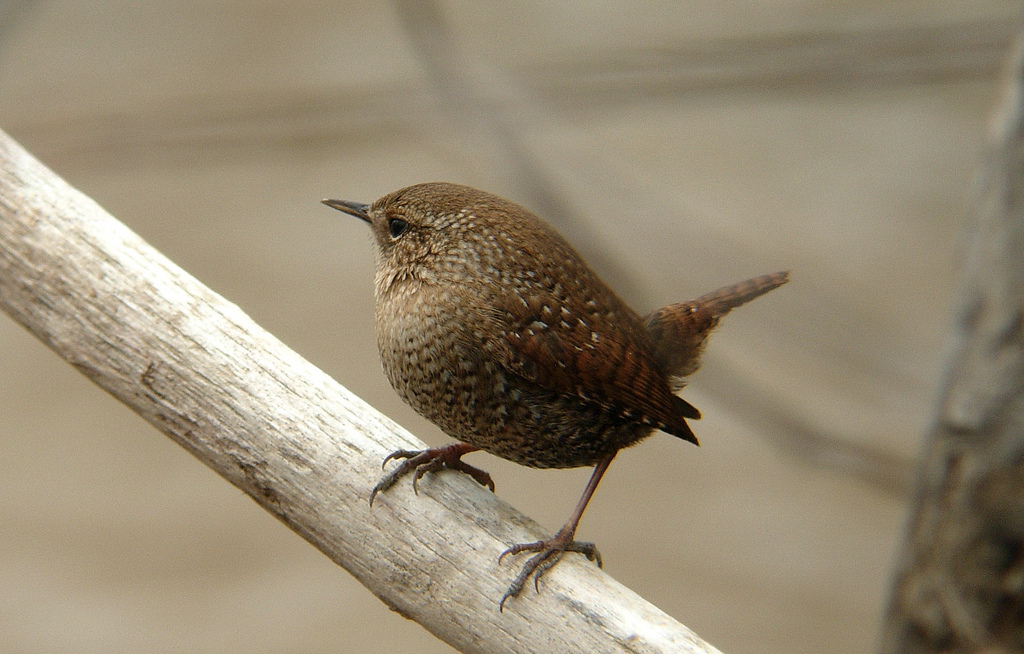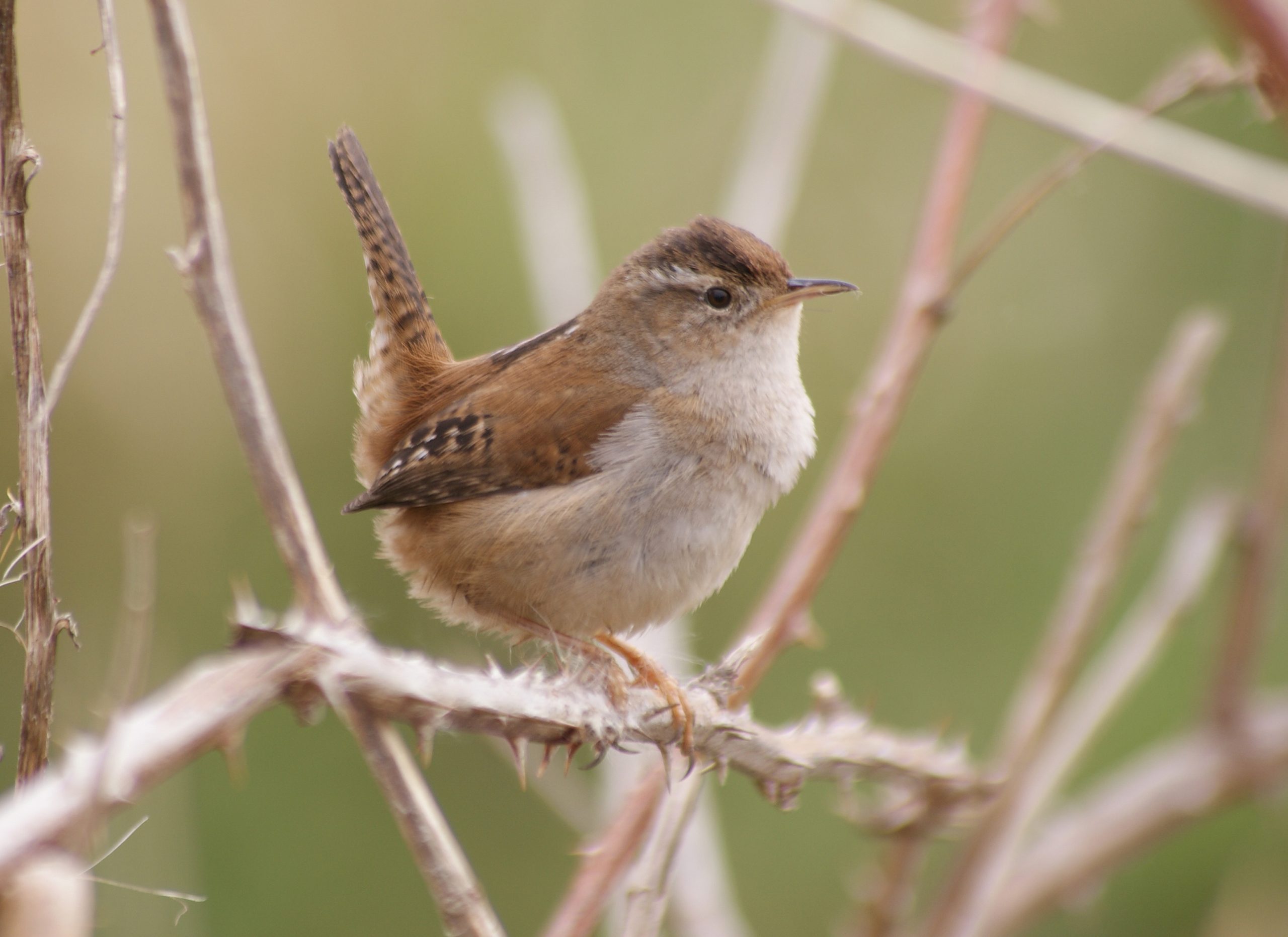In North America, there have been sightings of 11 distinct wren species, out of which 7 have been observed in Massachusetts. Among these, five species are considered regular inhabitants, while two are accidental visitors. This comprehensive guide aims to assist you in identifying these wren species based on their appearance and vocalizations.
Throughout the year in Massachusetts, you can spot two types of wrens: the Carolina Wren and the Winter Wren. During the summer season, House Wrens and Marsh Wrens also make appearances in the state. Additionally, keep an eye out for Sedge Wrens, Rock Wrens, and Bewick’s Wrens in Massachusetts.
Wrens, despite their unassuming appearance, are charismatic songbirds. They possess plump bodies, brown feathers, small size, upright tails, and powerful voices.
These wrens are part of the Troglodyidae family, which comprises New World birds found in North and South America, except for the Eurasian Wren, a species native to Europe and Africa.
Feeding primarily on insects and spiders, wrens have adapted to thrive in various environments, including arid and rocky regions with sparse vegetation.
Initially, Winter Wrens were believed to be the same species as Pacific Wrens and Eurasian Wrens. However, they have now been recognized as three distinct species.
Throughout history, wrens have been associated with folklore and symbolic meanings. In Europe, it was once believed that harming wrens would bring bad luck.
To help you identify the wren species in Massachusetts, this guide follows avibase’s classification. The species are listed in order of their sighting frequency, as reported by birdwatchers in the state.
For further assistance in identifying various bird species that frequent your backyard, you can obtain a complimentary bird identification photo guide tailored specifically to Massachusetts.
The following are the seven wren species observed in Massachusetts:
1. Carolina Wren

The Carolina Wren is a resident species that can be spotted in Massachusetts all year round. Approximately 14% of summer checklists and 16% of winter checklists submitted by birdwatchers in the state record sightings of Carolina Wrens.
Carolina Wrens possess a shy demeanor and sport dark brown feathers on their upper body, complemented by lighter brown plumage underneath. They feature a distinctive white stripe above their eyes and an erect tail.
Scientific name: Thryothorus ludovicianus
Length: 4.7-5.5 inches (12-14 cm)
Weight: 0.6-0.8 ounces (18-22 g)
Wingspan: 11.4 inches (29 cm)
These wrens are year-round residents found across the Eastern and Southeastern regions of the United States. Carolina Wrens inhabit wooded areas and dense vegetation, but they also visit backyard feeders. Their diet mainly consists of insects, spiders, lizards, frogs, and snakes.
The song of the Carolina Wren comprises short, rapid whistles.
2. House Wren

During the summer season in Massachusetts, House Wrens are prevalent, appearing in approximately 17% of checklists. They are most frequently observed from May to October. While most House Wrens migrate for winter, a few remain in Massachusetts throughout the year.
House Wrens are small birds with unremarkable brown plumage, featuring darker barred wings and tails and a paler throat. Males and females share similar appearances, and their distinguishing feature is a less prominent eyestripe compared to other wren species.
Scientific name: Troglodytes aedon
Length: 4.3-5.1 inches (11-13 cm)
Weight: 0.3-0.4 ounces (10-12 g)
Wingspan: 5.9 inches (15 cm)
During the summer breeding period, House Wrens are found in the United States and Southern Canada. In winter, they migrate to southern regions of the United States and Mexico. House Wrens can be spotted in backyards, parks, and open woods, where they actively search for insects and spiders. Their energetic behavior includes hopping through low branches and emitting cheerful songs.
House Wrens feed on various insects, such as beetles, caterpillars, flies, and even snail shells for calcium.
The song of the House Wren consists of a series of jumbled notes that change in pitch and speed.
3. Marsh Wren

Marsh Wrens can be observed in Massachusetts during their breeding season, appearing in approximately 4% of summer checklists. They are most commonly sighted from mid-April to October, although a few individuals can be found in the state throughout the year.
Marsh Wrens display brown feathers with black and white streaks on their back, grayish-brown underbellies, and the signature upright wren tail. Their shoulder lacks stripes, and their bills are longer than those of Sedge Wrens. Male and female Marsh Wrens share similar appearances.
Scientific name: Cistothorus palustris
Length: 3.9-5.5 inches (10-14 cm)
Weight: 0.3-0.5 ounces (9-14 g)
Wingspan: 5.9 inches (15 cm)
During the breeding season, Marsh Wrens reside in the northern US states and central Canada. They migrate to southern US states and Mexico for winter. While migrating, they can be spotted in the eastern United States.
Marsh Wrens are found in wetland areas, often clinging to reeds with each foot gripping a separate stalk. Although they can be challenging to locate, their distinctive buzzing song, especially during dawn and dusk, can guide your search. They primarily feed on insects and spiders near the water’s edge.
The song of the Marsh Wren consists of a distinctive buzzy melody that can last up to 20 minutes.
4. Winter Wren

Winter Wrens can be sighted in Massachusetts throughout the year, appearing in approximately 1% of both summer and winter checklists.
These wrens possess plump brown bodies with darker barring on their wings, tail, and belly. They feature a paler eyebrow stripe and maintain short, upright tails. Male and female Winter Wrens share similar appearances.
Winter Wrens closely resemble Pacific Wrens and were once classified as the same species. However, they are now recognized as separate species due to distinct songs.
Scientific name: Troglodytes hiemalis
Length: 3.1-4.7 inches (8-12 cm)
Weight: 0.3-0.4 ounces (8-12 g)
Wingspan: 4.7-6.3 inches (12-16 cm)
During winter, Winter Wrens can be found in the eastern US states. In summer, they migrate to northeastern US states and Canada.
Look for Winter Wrens hidden within tangled undergrowth in forests and backyards. They feed on insects and spiders by rummaging through fallen leaves and decaying bark.
The song of the Winter Wren consists of a long, bubbly, and sweet melody, which lasts up to 10 seconds.
5. Sedge Wren

Although rare, Sedge Wrens are considered regularly occurring species in Massachusetts. They were last spotted in the state in 2022, around the Nantucket area.
Sedge Wrens are small brown wrens with darker upper bodies, featuring streaks and barring, and paler underparts. They possess a light eyebrow stripe, and both males and females exhibit similar appearances.
Sedge Wrens resemble Marsh Wrens and can be found in similar wet habitats. However, Marsh Wrens lack striped shoulders and have lighter-colored bellies.
Scientific name: Cistothorus stellaris
Length: 3.9-4.7 inches (10-12 cm)
Weight: 0.3-0.3 ounces (7-10 g)
Wingspan: 4.7-5.5 inches (12-14 cm)
Sedge Wrens breed in southern Canada, the Midwest, and occasionally in the eastern United States. They migrate southward for winter, spending the season in southeastern states and northern Mexico, close to the Gulf and Atlantic coasts.
You can find Sedge Wrens hidden amidst wet grasslands, marshy areas, and meadows abundant in vegetation. They prefer shallower areas compared to Marsh Wrens and actively hunt for insects and spiders.
The song of the Sedge Wren comprises a few short notes followed by a series of rapid notes at a similar pitch.
6. Rock Wren

Rock Wrens are exceedingly rare in Massachusetts and are classified as accidental species. Their last sighting in the state dates back to 1997.
Rock Wrens display pale brown plumage on their back, adorned with darker flecks. They have barred wings and tails, while their underparts are pale with buff coloring on the lower flanks and belly. Both males and females share similar coloring. Rock Wrens exhibit a distinctive behavior of bobbing up and down, especially when agitated, aiding in their identification.
Scientific name: Salpinctes obsoletus
Length: 4.9-5.9 inches (12.5-15 cm)
Weight: 0.5-0.6 ounces (15-18 g)
Wingspan: 8.7-9.4 inches (22-24 cm)
Rock Wrens are typically found in dry and rocky areas within western US states and southwest Canada. While those in the south and west remain in their habitats throughout the year, those residing in central US states migrate southward for winter.
To locate Rock Wrens, search in dry and rocky areas with sparse vegetation, as they feed on insects they find within crevices in the rocks.
The song of the Rock Wren consists of multiple repeated sounds at varying pitches, with each rendition being different.
7. Bewick’s Wren

Bewick’s Wrens are considered accidental species in Massachusetts and are rarely observed in the state.
These wrens feature brown backs, long gray upright tails with darker barring, gray bellies, and a white stripe above their eyes.
Scientific name: Thryomanes bewickii
Length: 5.1 inches (13 cm)
Weight: 0.3-0.4 ounces (8-12 g)
Bewick’s Wrens inhabit southern and western US states throughout the year, with slight movements occurring during winter.
You can find Bewick’s Wrens in scrublands, thickets, and open woodlands, where they hop from branch to branch, often flicking their long tails. Their diet consists of insects, larvae, including bees, bugs, caterpillars, and beetles.
The song of the Bewick’s Wren starts with a couple of short, higher-pitched notes, followed by lower-pitched, buzzy notes.
How to Attract Wrens to Your Backyard
To attract wrens to your backyard, create habitats suitable for insects and spiders, such as leaving fallen leaves, brush piles, and spider webs. Additionally, providing clean water sources in multiple locations and offering nesting sites, such as nest boxes, can encourage wrens to visit. Feeding them with mealworms, crickets, peanuts, and suet can also attract their attention.
How Frequently Wrens are Spotted in Summer and Winter Massachusetts
Based on birdwatchers’ checklists submitted to eBird, the frequency of wren sightings in Massachusetts during summer and winter is as follows:
Wrens in Massachusetts in Summer:
– House Wren: 17.1%
– Carolina Wren: 14.3%
– Marsh Wren: 4.1%
– Winter Wren: 1.4%
– Sedge Wren: <0.1%
Wrens in Massachusetts in Winter:
– Carolina Wren: 16.7%
– Winter Wren: 1.2%
– Marsh Wren: 0.3%
– House Wren: <0.1%
– Sedge Wren: <0.1%
– Rock Wren: <0.1%
